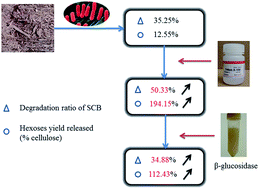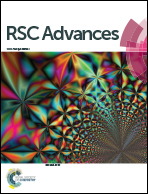Enhanced saccharification of cellulose and sugarcane bagasse by Clostridium thermocellum cultures with Triton X-100 and β-glucosidase/Cellic®CTec2 supplementation
Abstract
Clostridium thermocellum is the most efficient cellulose-degrading bacterium known for producing cellulosome, which was used to directly degrade sugarcane bagasse (SCB) with limited glucose accumulation. However, the glucose production was significantly enhanced with 0.25% Triton X-100 and 30 U g−1 of β-glucosidase supplementation. A glucose accumulation of 21.33 ± 0.35 g L−1 and substrate degradation of 61.91 ± 0.77% from 60 g L−1 sodium hydroxide-pretreated SCB were reached, with a 609.41% and 75.53% increase over the control (3.01 ± 0.26 g L−1, 35.27 ± 2.91%), respectively. More interestingly, a synergism between C. thermocellum cultures and Cellic®CTec2 (30 CBU per g, 1.2 FPU per g substrate) in the enzymolysis of Avicel was observed and the glucose concentration and saccharification ratio of Avicel reached 56.90 ± 1.20 g L−1 and 94.8% at 60 g L−1 Avicel. Moreover, a highest glucose concentration of 83.17 g L−1 was achieved at 100 g L−1 Avicel. The present work provides an effective and promising process for industrial saccharification of cellulose.



 Please wait while we load your content...
Please wait while we load your content...